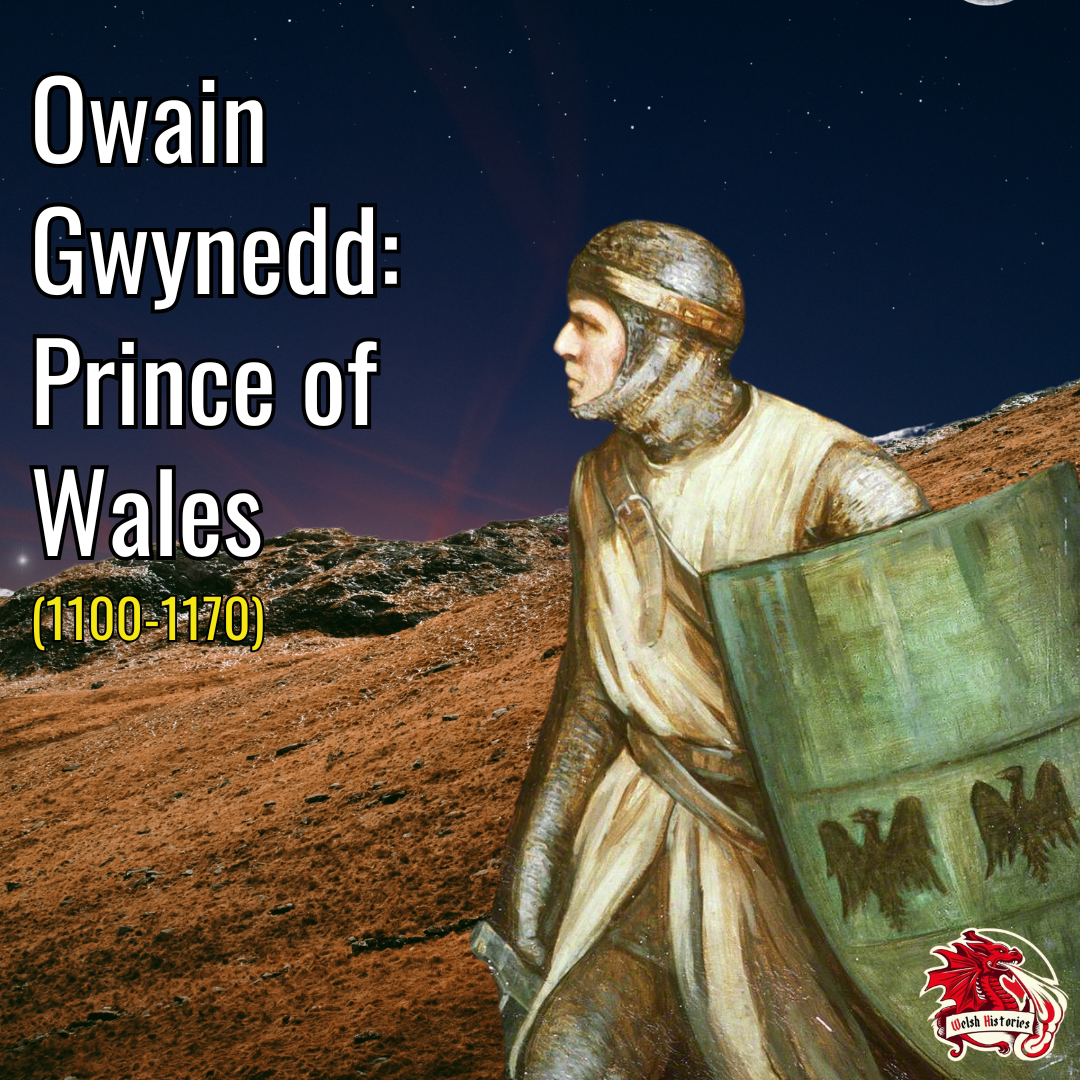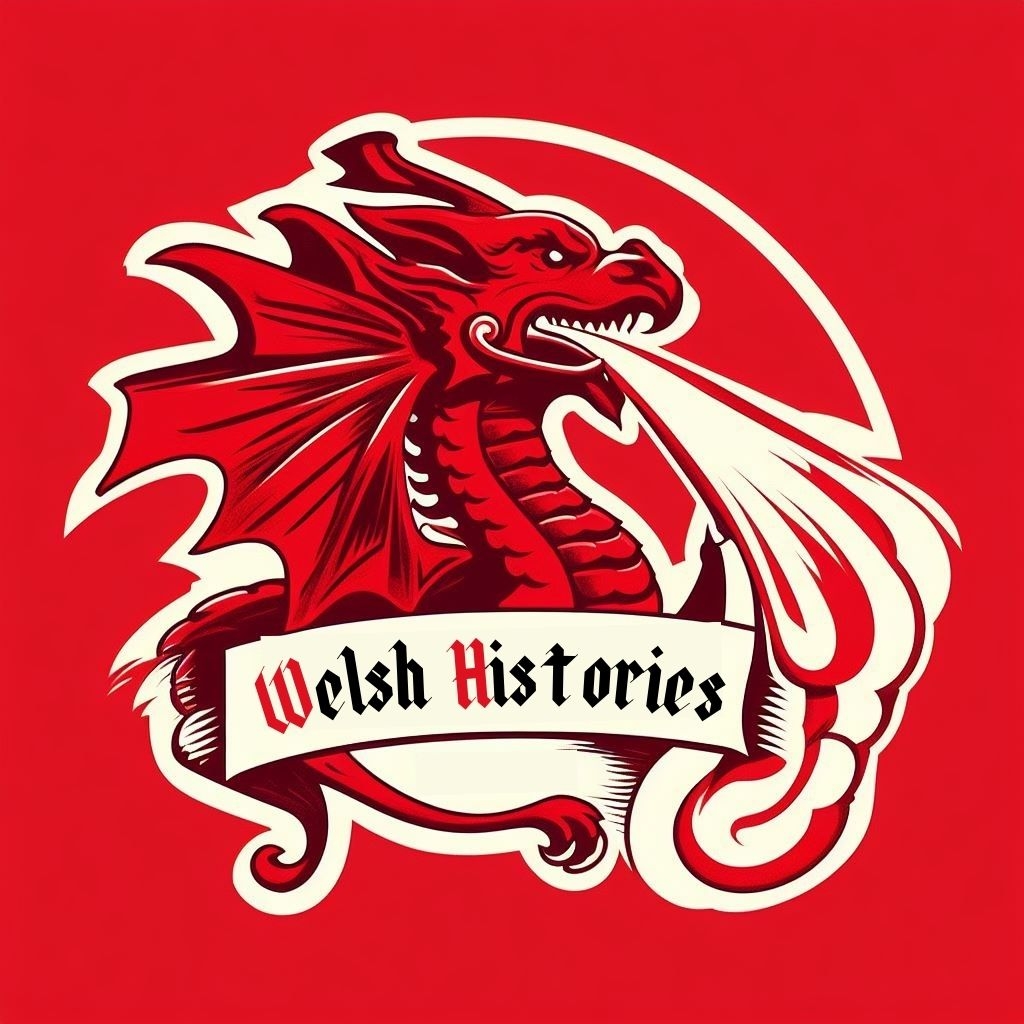Your basket is currently empty!

Owain Gwynedd: Prince of Wales
One of the most deeply significant of the medieval Welsh princes is none other that Owain ap Gruffudd, who is better known as, simply (though he was by no means a simple man), Owain Gwynedd.
Owain Gwynedd was named as such as his real name, Owain ap Gruffudd, was shared by the contemporary ruler of Powys Wenwynwyn, Owain ap Gruffudd ap Maredudd. Therefore, “Owain Gwynedd” is much better for historians.
How Did He Reign?
Owain Gwynedd (1100-1170) reigned from 1137 until his death in 1170, after succeeding King Gruffudd ap Cynan.
Two immediate notable aspects of Owain are that he was posthumously recognised as Owain “Fawr” (Owain “The Great”, one of only a few Welsh rulers to be termed as such, alongside Rhodri and Llywelyn the Great) and is considered the first true “Prince of Wales”.
Owain was never expected to rule as King of Gwynedd, as he did have an older brother in Cadwallon – but he perished in battle in the year 1132.
Owain became a leader of men even prior to becoming King, as he led his father’s troops into battle once Gruffudd had grown too old (and blind) to lead them himself.
Heroics at the Battle of Crug Mawr
As early as 1136, one year before his reign, he had already achieved numerous victories over the Normans, including the Battle of Crug Mawr. The battle was fought between the Welsh and the Normans in either September or October of 1136. It saw a united front of Welshmen, being led by the formidable alliance of Owain Gwynedd, his brother Cadwaladr ap Gruffudd and Gruffydd ap Rhys (King of Deheubarth), a mighty King perhaps less famous than his wife, Gwenllian, and his son, Rhys ap Gruffydd.
Crug Mawr took place roughly 3.2 km (2 miles) northeast of Aberteifi (Cardigan), right next to the village of Penparc. An estimated army of around 6,000 men fought for the Welsh, with an unknown number of Normans (believed to be much larger and described as “substantial”) fighting for the opposing side.
The battle began as a part of a wider revolt against the Normans in Cymru. Earlier in 1136, the Marcher Lord Richard Fitz Gilbert de Clare was killed by Welsh soldiers during his attempt to take Ceredigion with 500 men. It is believed that he, too, was slain by the Welsh longbow.
Even more, a battle had taken place earlier in the year at Kidwelly Castle, resulting in the capture and beheading of the valiant Gwenllian by the Normans – angering Gruffydd (her husband), Owain Gwynedd (her brother) and Cadwaladr (brother of Owain and Gwenllian). This bolstered the alliance between them and, in-part, led to Crug Mawr.
Crug Mawr was a crushing defeat for the Normans and a brilliant win for the Welsh. Eventually, the Normans were made to flee the battle – they were chased as far as Afon Teifi. When trying to cross the bridge, it collapsed under their weight; many of the soldiers drowned, with the dead bodies (human and horse alike) blocking the flow of the river.
It ensured a long-time postponement of a Conquest of Wales which would never take place until 1283; resulted in the bolstering of a Welsh alliance which, for a short period, thrived and led to a 40 day celebration.
Gruffydd ap Rhys would die in 1137, with the cause uncertain. Owain and Cadwaladr would die in 1170 and 1172, respectively – both in their 70s. Ceredigion, too, was annexed into the Kingdom of Gwynedd via his battle acumen.
Owain Gwynedd & Henry II
Owain initially only inherited part of the gogledd Cymru (north Wales) Kingdom in 1137. However, the man who received the other part, his brother Cadwaladr, would later be indicted for the murder of the Welsh Prince of Deheubarth and become exiled.
The Anarchy between 1138 and 1153 allowed Owain to push the Kingdom’s borders further east, leading to the subjugation of Powys in 1150. However, Powys’ Prince, Madog, aligned with King Henry II of England in 1154 and Owain’s exiled brother, Cadwaladr. The Battle of Ewloe would ensue between the forces of Henry and Owain, with Henry being victorious and leading to the surrender of the easterly territorial captures of Owain. However, Henry was almost captured in the battle – this would have significantly altered history!
Owain regained Powys upon Madog’s death in 1160 and aligned with Deheubarth to challenge Henry II once more, who had angered the entirety of the Welsh population drawing the previous war, in which Henry’s men destroyed numerous churches. All of the Welsh aligned behind Owain this time – the arguable first true war between Cymru and Lloegr (England). The terrible weather conditions (poor weather in Wales?) assisted Owain in the war, though Henry captured and mutilated two of Owain’s sons.
Prince of Wales
Owain wrote to Louis VII of France often, and it was during these letters where he referred to himself as the “King of Wales” before adopting the title “Prince of Wales”.
Owain offered to make Cymru a vassal of the French, too, which would have surely been interesting! However, he was likely offering such promises to entice Louis into battle against Henry. Henry would never invade Gwynedd again, though, and Gwynedd would once more welcome Rhuddlan and Powys into the Kingdom’s borders.
Owain also had a dispute with the famed Archbishop of Canterbury, Thomas Becket, over the selection for the vacant position of Bishop of Bangor. Owain eventually won the dispute.
Owain Gwynedd remains one of the most revered of all the Welsh Princes.
More from Welsh Histories
Welsh Histories is a Welsh history celebrating platform which looks to promote all aspects of Welsh history. Though we focus predominantly on native Welsh history, we do also share the non-native aspects from time to time. You can follow us on Facebook; Instagram or Twitter for more. You can also support us as a member of our Patreon community. A reader? We also have our very own Welsh Histories Shop where we sell our Welsh Histories Magazine. Diolch yn fawr iawn and keep enjoying Welsh Histories.
Niklas is the founder, owner, manager, editor, writer, video creator, voice over artist, and so forth, of Welsh Histories. He is passionate about the preservation of Welsh culture; the rejuvenation of the Welsh language and the promotion of Welsh history. Niklas currently resides in Pune, Maharashtra, with his beloved wife.


Comments
One response to “Owain Gwynedd: Prince of Wales”
I love reading this. I believe this explains my husband’s Ydna descent. The times and places seem to align.
Fascinating stuff.